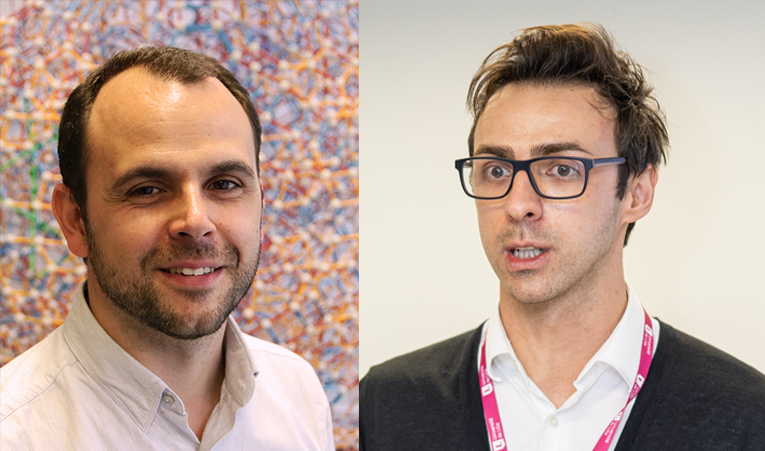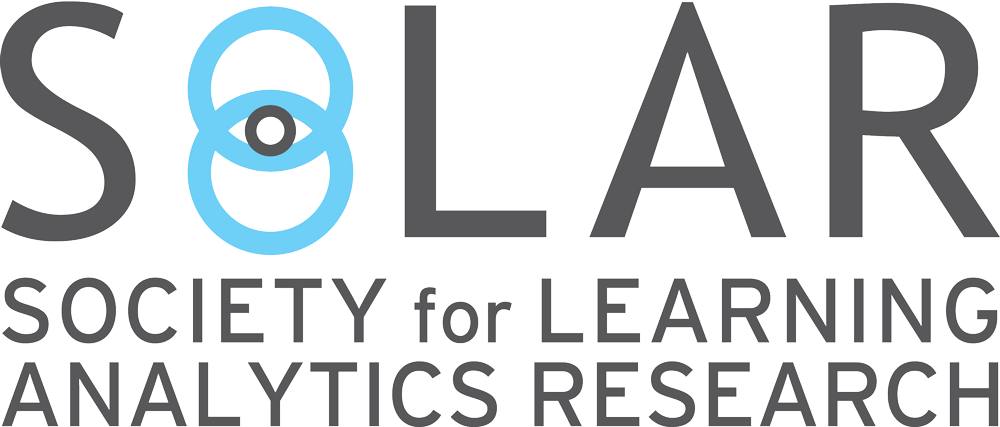Same, same but different: the fading boundaries between LA and AIED
December 9, 2021
Keywords: Artificial Intelligence, discipline boundaries, learning analytics
Target readers: Learning Analytics Practitioners, Learning Designers, Educators, Researchers

Author: Prof Manolis Mavrikis & Dr Mutlu Cukurova
Position: Manolis Mavrikis and Mutlu Cukurova are based at the UCL Knowledge Lab - a research centre of the UCL Institute of Education dedicated to exploring how people live and learn with technology in order to solve societal challenges. The Knowledge Lab hosts the MA in Education and Technology where they also teach on the design, use and evaluation of educational technology with a particular focus on Artificial Intelligence and Learning Analytics. Manolis and Mutlu are also currently two of the co-editors of the British Journal of Educational Technology. Manolis is on the executive committee of the International Artificial Intelligence in Education Society (IAIED).

Photo by Michael Dziedzic on Unsplash
Same, same but different: the fading boundaries between LA and AIED
No one expected that our last team catch-up call at the UCL Knowledge Lab would spark laughter and debate over a seemingly unimportant statement.
A member of our group marking assignments for the master’s of Education and Technology claimed that soon our students would use tools such as OpenAI to answer essay questions.
While a plausible claim, referring to a genuine question of a teacher in our cohort, one of the essay assessors in our group said:
I doubt that OpenAI would be able to answer what is the difference between Artificial Intelligence in education and Learning Analytics.
Seconds later a postgraduate student coded a call to OpenAI’s API and shared its ‘wisdom’:
Q: What is the difference between Artificial Intelligence and Learning Analytics? A: Learning Analytics is a subset of AI. AI is a subset of Learning Analytics.
You can imagine the chaos that ensued! Following the initial laughter, a heated debate started about set theory — for OpenAI to say that two sets are subsets of each other, it must be that they are the same set! How could that be the case? The philosophical debate was reduced at times to a chicken and egg problem and moved on whether the difference is “just semantics”.
Once everyone had calmed down, we moved into a more sobre discussion about how Artificial Intelligence in Education (AIED), Educational Data Mining (EDM) and Learning Analytics (LA) relate to each other as sister research fields and communities. We tried to resolve some of these debates by resorting to historical evidence (and a bit of hearsay!). Here are a few of the key takeaways, with pointers for readers who want to go deeper.
As everyone interested in AI can imagine, the discussion naturally gravitated towards what artificial intelligence (and intelligence in the first place) means in the above sentence. Of course, one can go back to the origins as described in seminal books, talk about strong and weak AI, Knowledge Representation vs Machine Learning and so on.
The discussion reminded us that AI is a field of research (or may be conceptualised as multiple fields) and (in our context) AI is both a technology (best characterised by its features and functions) and a scientific methodology applied in educational settings. A well-known conundrum in the field is the ‘AI effect’: the definition of AI changes over time because as soon as we invent machines that can do something previously referred to as ‘intelligent’, it’s demoted to being mere computation.
Before being accused of dodging the question of defining AI, even if a community can’t agree on a single AI definition, individual researchers and projects should make their working definition of AI clear. This is especially important as AI gains visibility in the public eye, where terms such as intelligence and learning are used in myriad ways, sowing confusion.
A bit of AIED history
To help the discussion, we reminded newcomers of the history of AIED. This blog cannot capture the field's 50+ years, but readers may want to check out early traces of the field in Jaime Carbonell's An AI Approach to Computer-Assisted Instruction in the 1970s. This was the era of expert systems like ELIZA, SCHOLAR and MYCIN, which influenced the emergence of what is now called Intelligent Tutoring Systems, now often marketed as Adaptive/Personalized Learning systems.
The International Artificial Intelligence in Education (IAIED) Society was formed in 1991 as a division of the Association for the Advancement of Computing in Education (AACE), which was already hosting the International Journal of Artificial Intelligence in Education (IJAIED).
Nowadays, IAIED is home to an interdisciplinary community of computer scientists, educators, and psychologists across the globe, bringing diverse methods to the research and development of interactive and adaptive learning environments “for learners of all ages, across all domains”. The society continues to host an active conference and its journal passed its 25th Anniversary recently.
Fading disciplinary boundaries
Some NEXUS readers may be familiar with the history of Educational Data Mining and Learning Analytics. The two communities broadly share the goal of improving the analysis of educational data to support practice and education. Two of the ‘founding fathers’, George Siemens and Ryan Baker reviewed how the fields compared and contrasted in 2012, just as LA was emerging. They noted that EDM research tends to focus on the automated discovery of patterns in data, improving data analysis techniques, and reducing phenomena into components looking into the relationships between them. In contrast, LA research seeks to understand systems as a “whole, in their full complexity”, focusing, for instance, on organizational readiness and strategy for LA to make institutional impact.
Beyond these differences however, Siemens & Baker emphasised that these characterisations are oversimplifications, and called for the two communities to build stronger collaborative links. This argument was expanded in a recent paper by Baker et al. who examined how the core methodological paradigms of each field are informed by developments in other fields including AIED.
It seems that the call to build links has borne fruit, at least, in the eyes of some of our students/teachers. In their view, the boundaries between the fields are dissolving. The International Conference on Learning Analytics & Knowledge (LAK) publishes work that is not strictly “data-intensive research” in a traditional sense (e.g., paying attention to the importance of human-centered design methods). Similarly, many AIED papers tend to employ data-driven AI techniques, in particular machine learning, to answer research questions. Of course, this also represents the evolution of the AI field from purely symbolic or model-driven, to data-driven. However, the proceedings also involve research with a focus on design issues, as well as on the broader ethical and societal implications of AI in education.
Building bridges
Returning to the opening dialogue, it is probably beyond OpenAI’s abilities to comprehend that research in these fields is deeply interdisciplinary by its nature, and this significant overlap is also a healthy sign of the fact that the conferences and communities are diverse and inclusive.
For us, this diversity is a value to flourish, rather than a challenge to be addressed within each community. All research societies in the field have common points of contact and a remit to build bridges with other societies. This has led to the International Alliance to Advance Learning in the Digital Era that aims to foster this diversity and facilitate productive partnerships.
So, who would imagine? Perhaps OpenAI was onto something!
Learn more
- The blog builds on the following article that accompanies the special issue in Artificial Intelligence and Education of Bildung Und Erziehung
Mavrikis, M., Cukurova, M., Di Mitri, D., Schneider, J., & Drachsler, H. (2021). A short history, emerging challenges and co-operation structures for Artificial Intelligence in education. Bildung Und Erziehung, 74(3), 249–263. https://doi.org/10.13109/buer.2021.74.3.249
- Readers interest in a detailed history of the society, and the journal, are referred to the following
Self, J.A. (2016): The birth of IJAIED. Int. J. of Artificial Intelligence in Education, 26, 1, 4-12. https://link.springer.com/article/10.1007/s40593-015-0040-5
McCalla, G. (forthcoming): The History of Artificial Intelligence in Education – The First Quarter Century. In du Boulay, Ben, Mitrovic, Tania & Yacef, Kalina (eds) Handbook of Artificial Intelligence in Education.
- Other references we drew upon when writing the blog
Buckingham Shum, S.J. & Luckin, R. (2019), Eds: Learning Analytics and AI: Politics, Pedagogy and Practices. British Journal of Educational Technology (50th Anniversary Special Issue), 50, (6), pp.2785-2973. https://doi.org/10.1111/bjet.12880
Chen, G., Rolim, V., Mello, R. F., & Gašević, D. (2020). Let’s Shine Together! A Comparative Study between Learning Analytics and Educational Data Mining. Proceedings of the Tenth International Conference on Learning Analytics & Knowledge, 544–553. https://doi.org/10.1145/3375462.3375500
Porayska-Pomsta, K. AI as a Methodology for Supporting Educational Praxis and Teacher Metacognition. International Journal of Artificial Intelligence in Education, 26, 679–700 (2016). https://doi.org/10.1007/s40593-016-0101-4
